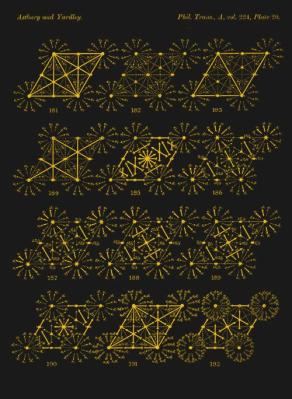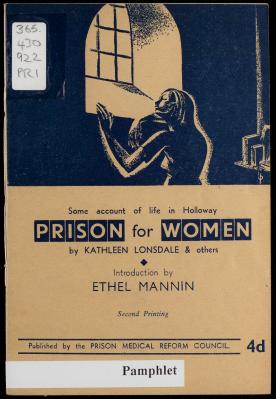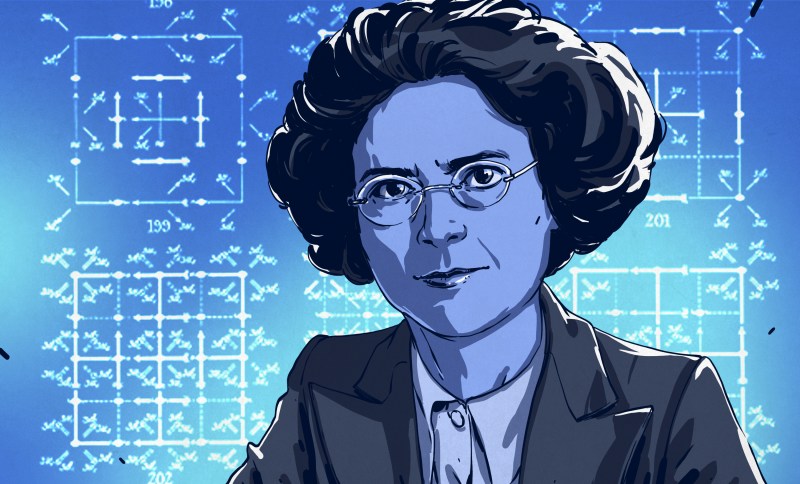The unspoken promise of new technologies is that they will advance and enhance our picture of the world — that goes double for the ones that are specifically designed to let us look closer at the physical world than we’ve ever been able to before. One such advancement was the invention of X-ray crystallography that let scientists peer into the spatial arrangements of atoms within a molecule. Kathleen Lonsdale got in on the ground floor of X-ray crystallography soon after its discovery in the early 20th century, and used it to prove conclusively that the benzene molecule is a flat hexagon of six carbon atoms, ending a decades-long scientific dispute once and for all.
Benzene is an organic chemical compound in the form of a colorless, flammable liquid. It has many uses as an additive in gasoline, and it is used to make plastics and synthetic rubber. It’s also a good solvent. Although the formula for benzene had been known for a long time, the dimensions and atomic structure remained a mystery for more than sixty years.
Kathleen Lonsdale was a crystallography pioneer and developed several techniques to study crystal structures using X-rays. She was brilliant, but she was also humble, hard-working, and adaptable, particularly as she managed three young children and a budding chemistry career. At the outbreak of World War II, she spent a month in jail for reasons related to her staunch pacifism, and later worked toward prison reform, visiting women’s prisons habitually.
After the war, Kathleen traveled the world to support movements that promote peace and was often asked to speak on science, religion, and the role of women in science. She received many honors in her lifetime, and became a Dame of the British Empire in 1956. Before all of that, she honored organic chemistry with her contributions.
From Math to Physics to Chemistry

Kathleen Yardley was born in Ireland on January 28th, 1903. She was the tenth and final child of Harry and Jessie Yardley. Her father Harry was the town postmaster and spent much of his free time reading. Kathleen has said that she got her passion for facts from her father.
Unfortunately, her parents’ marriage ended and Jessie moved the children to England. Jessie was a strict Baptist, and Kathleen has said that her earliest memories are of attending church and learning to count with little yellow balls at school.
Kathleen won a scholarship to a girls’ high school and later attended a boys’ high school for math and science classes, which were not offered at the girls’ school. Her older siblings were forced to drop out of school so that they could get jobs and help support the family. One of her brothers, Fred, was a wireless operator and received the last signals from the Titanic.
At age sixteen, Kathleen won scholarship through the county and entered Bedford College for Women, a division of the University of London. She started down a mathematical path, but soon switched to physics, earning a Bachelor of Science in 1922 at age nineteen with the highest marks the school had seen in ten years. She worried about finding a job, and was surprised and honored when Sir William Henry Bragg, X-ray diffraction pioneer and Physics Nobel Laureate 1915 invited her to stay and join his crystallography research team at the University in a paid position while she did her master’s degree. In 1929, Kathleen would be awarded a doctorate of science from the Faraday Laboratory of the Royal Institution.
Sir Bragg proved to be quite an inspiring mentor and supervisor, and Kathleen wrote this of him:
He inspired me with his own love of pure science and with his enthusiastic spirit of inquiry, and at the same time left me entirely free to follow my own line of research.

Decoding the Benzene Ring
In 1923, W.H. Bragg left for the Royal Institution in London and Kathleen went with him. It was around this time that X-ray crystallography began to be used to look inside organic molecules — carbon atoms with other elemental atoms attached. The process involved a lot of calculations, and Kathleen saw the need for crystallography look-up tables that would greatly speed things up. Together with her lab-mate, they created the Astbury-Yardley tables, which formed the basis for what became the International Tables for X-ray Crystallography.
While at the Royal Institution, Kathleen met Thomas Lonsdale, an engineering student who would become her husband. They married in 1927 and then moved to Leeds to accommodate his new job. Meanwhile, Kathleen joined the University of Leeds’ physics department and worked on X-ray diffraction.
It was at the University of Leeds that Kathleen made a name for herself. Chemists had been arguing about the atomic structure of benzene for decades. In 1865, chemist August Keuklé had a dream that included a vision of the structure of benzene. He saw atoms dancing around and transforming into an ouroboros — a serpent swallowing its own tail. Kathleen was given hexamethylbenzene crystals to study, and in 1929 she was able to prove conclusively that the benzene molecule is in fact a flat ring. This was a remarkable achievement, especially considering that all the calculations had to be done by hand. And as if that wasn’t enough of a contribution, Kathleen was also the first to apply Fourier methods to X-ray pattern analysis as she solved the structure for another type of benzene — hexachlorobenzene.

Kathleen’s first child, Jane, arrived later that same year. The family soon moved back to London and had two more children in 1931 and 1934 — Nancy and Stephen. Although moving and raising children greatly disrupted Kathleen’s work, she kept her head in the crystallography game, doing calculations of structure factors by hand whenever she had the time. Soon, Sir Bragg shared good news: he’d been given an allowance so that Kathleen could hire a nanny and come back to work at the Royal Institution.
When Kathleen returned, there were no X-ray instruments available to her. She was able to secure a large electromagnet instead, so she pursued another interest — determining the magnetic properties of benzene-like compounds known as aromatics. By doing this, she was able to establish proof of molecular orbitals, but another chemist, Linus Pauling, beat her to publication.
Jailed for Her Beliefs

As an adult, Kathleen rejected her Baptist upbringing. She and Thomas joined the Quakers, who are chiefly pacifists. Kathleen refused to register for war service in WWII even though it was expected of everyone. She was charged her a £2 fine which she also refused, and this earned her a month in Holloway Prison.
Kathleen had to clean floors there and do other tasks, but the chores weren’t too restrictive — she managed to get in several hours of scientific work on most days. Her time in Holloway touched her deeply, and she later fought for prison reform and became a volunteer visitor to women’s prisons.
Toward the end of her time at the Royal Institution, she examined kidney stones and diamonds, both synthetic and natural, studied solid-state reactions, and developed divergent beam X-ray photography.
Kathleen also joined the fight for world peace and received many honors and awards, including a claim to Dame in 1956 and a fellowship in the Royal Society.
Thanks for the skookum tip, [AvE]!
















I’d dewar.
Your joke leaves me flask-ed.
Every joke has a silvered lining
Don’t you dare talk about my great-grandmother like that!
She sounds like a remarkable woman.
Usage note for Kristina:
Your mention of Sir Bragg grates. Either Bragg or Sir William would be correct.
“The prefix is used with the holder’s given name or full name, but never with the surname alone. For example, whilst Sir Alexander and Sir Alexander Fleming would be correct, Sir Fleming would not.” — Wikipedia
What Vijeo did AvE mention her in? I need to rewatch it :D
Oh, it was a private tip.
I remember as a teen, reading somewhere about Keukle’s dream of the ring structure of Benzene. Nice to hear the rest of the story.
Please continue with these mini-biographies of lesser known scientists…they’re fascinating!
I couldn’t remember who it was (bad biochemist!! bad!) so I had to wiki it, but Kary Mullis supposedly invented the polymerase chain reaction (awarded a Nobel for it) while frying ballz on LSD. I recall reading a similar description of a snake chasing it’s tail, but can’t find a citation.
Who makes synthetic kidney stones?
I’m glad I wasn’t the only one with that takeaway :)
I also had this thought at first. But kidney stones consist of typical substances/ions: calcium, magnesium, phosphate, oxalate, etc. So it is possible to make these substances artificially in pure form, just to examine the crystal structure and compare it with real kidney stones.
“Kekulé dreams the Great Serpent holding its own tail in its mouth, the dreaming Serpent which surrounds the World. But the meanness, the cynicism with which this dream is to be used. The Serpent that announces, “The World is a closed thing, cyclical, resonant, eternally-returning,” is to be delivered into a system whose only aim is to violate the Cycle. Taking and not giving back, demanding that “productivity” and “earnings” keep on increasing with time, the System removing from the rest of the World these vast quantities of energy to keep its own tiny desperate fraction showing a profit: and not only most of humanity—most of the World, animal, vegetable, and mineral, is laid waste in the process. The System may or may not understand that it’s only buying time. And that time is an artificial resource to begin with, of no value to anyone or anything but the System, which must sooner or later crash to its death, when its addiction to energy has become more than the rest of the World can supply, dragging with it innocent souls all along the chain of life. Living inside the System is like riding across the country in a bus driven by a maniac bent on suicide . . . though he’s amiable enough, keeps cracking jokes back through the loudspeaker . . .” thomas pynchon gravity’s rainbow